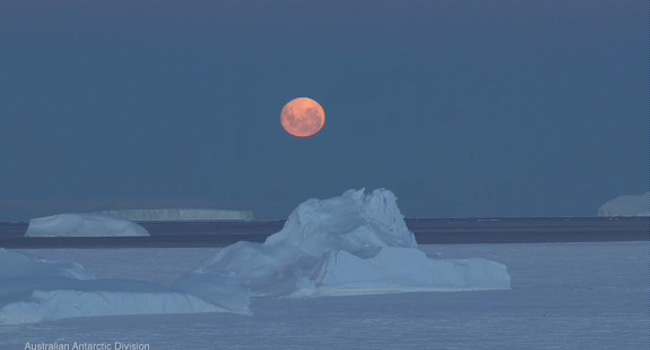Two weeks ago Jilli Rose found out she was the 2014 Australian Antarctic Arts Fellow; in two weeks she will build her own ice cave and bivvy overnight in a plastic bag in the Antarctic.
The Castlemaine (VIC) animator and producer, whose award-winning short documentary Sticky about Lord Howe Island stick insects is fast gathering traction on social media, is bursting with excitement that she will soon spend two weeks drawing, filming and presumably hacking at lumps of ice to fashion an overnight shelter, in one of the most remote parts of the world.
Her mission is to bring the work done by the Australian Antarctic Division to life, especially for children, and to show the human stories and emotions behind the science using short animated films.
She will be based at Casey Station, one of the four permanent Australian research stations in the Antarctic, a station which has around 150 expeditioners coming through it each summer.
Rose, who said she applied ‘on a whim’ in a late night last-minute application, will also produce a film and sketchbook documentary for adults about the making of her animations and the way scientists and artists communicate with each other.
“The world seems to be split between people who would love to go and people who think it’s the most awful thing in the world: I’m really excited,” Ms Rose said.
“If feels like a dream at the moment. I’m a little concerned that it’s going to remain like a dream!”
The dream will quickly morph into reality when the Australian Antarctic Division kits her out with five different layers on her arrival for the four-hour flight from Hobart, including salapettes, gaiters, balaclava and thermal undies while Ms Rose figures out how to make art in extreme conditions.
“They told me to bring some duct tape to wrap around my camera in case it freezes to my face. I’m just going to bring some really rugged little cameras and hope for the best,” she said.
Rose will also be armed with paper, pencils and charcoal.
“It’s like, what do you take to the moon?”
The animator is not yet wedded to what topics she will choose but she is sure climate change will be one of them and that penguins and seals would probably sneak in somewhere too.
She is anticipating that her ideas will develop and change as she engages with Casey’s scientists and other station staff: “I’m in super sponge mode, so that’s fine.”
One idea is to talk to scientists researching polar moss, the dominant plants in polar regions, because they accurately reflect the speed of climate change.
Rose said she learned about polar moss at a recent World Parks Congress.
“It brought to my attention how ignorant I am. I think we’re all quite ignorant about it [climate change], except for the people who work there year on year. The changes that are happening are just dire.”
Rose’s techniques include filming people and then tracing over online footage, 3-D animation and sculpting on a computer and animating her drawings.
She is also considering creating a tablet-based interactive world, like a game environment, to guide people deeper into the Antarctic experience.
Because Rose does not know yet how far afield she will be allowed to go once she reaches Antarctica she is also considering attaching tiny go-pro cameras onto scientists’ helmets while they are out in the field and using these video diaries to inform her work.
Rose said her work was not just about bringing the work of Antarctica’s scientists to life but also about inspiring children aged between 11 and 13 to consider careers as scientists, especially girls or children who might have been told they are not smart and who had ruled out a scientific career. She also wants to challenge stereotypes of scientists as pale, bespectacled nerds.
“It’s about stories and if you put these things into any project you get an emotional response from people and that’s what I’m interested in,” she said.
The Antarctic Arts Fellowship has been running since 1985. Previous fellows have included writer Tom Griffiths, children’s authors Carol Tulloch and Alison Lester and sound artist Philip Samartzis.
Comment below to have your say on this story.
If you have a news story or tip-off, get in touch at editorial@governmentnews.com.au.
Sign up to the Government News newsletter

